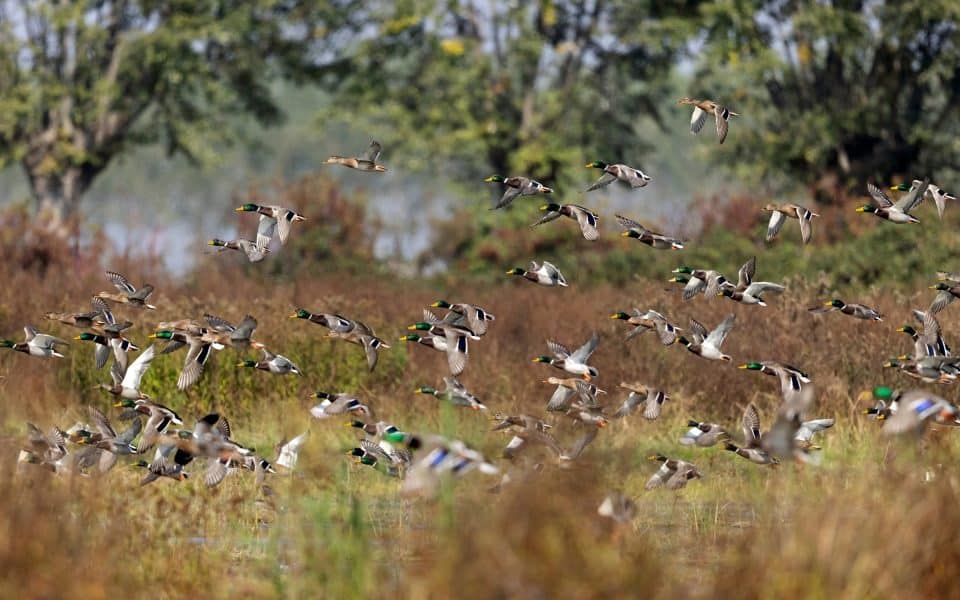Once you locate the “X that marks the spot,” strategies for waterfowl hunting local ducks are relatively straightforward. Scout carefully to pinpoint where the birds want to be, and get there before they do! For these local ducks, you don’t need many decoys. Set a humble spread of a dozen or so decoys, and have one or two hunters tucked in natural cover. Mimic their feeding chatter with a duck call, and they’ll have no reason to change their pattern.
Awaiting the Migrations
Of course, the holy grail for duck hunters are the great feathered migrations that sweep down from the north each fall. The migration brings plenty of new birds, but these late-season birds have run a gauntlet across thousands of miles, getting educated by hunting pressure all along their journey. As food sources are depleted and weather systems shove them along, ducks enter a pure survival mode that makes them incredibly wary and difficult to fool.
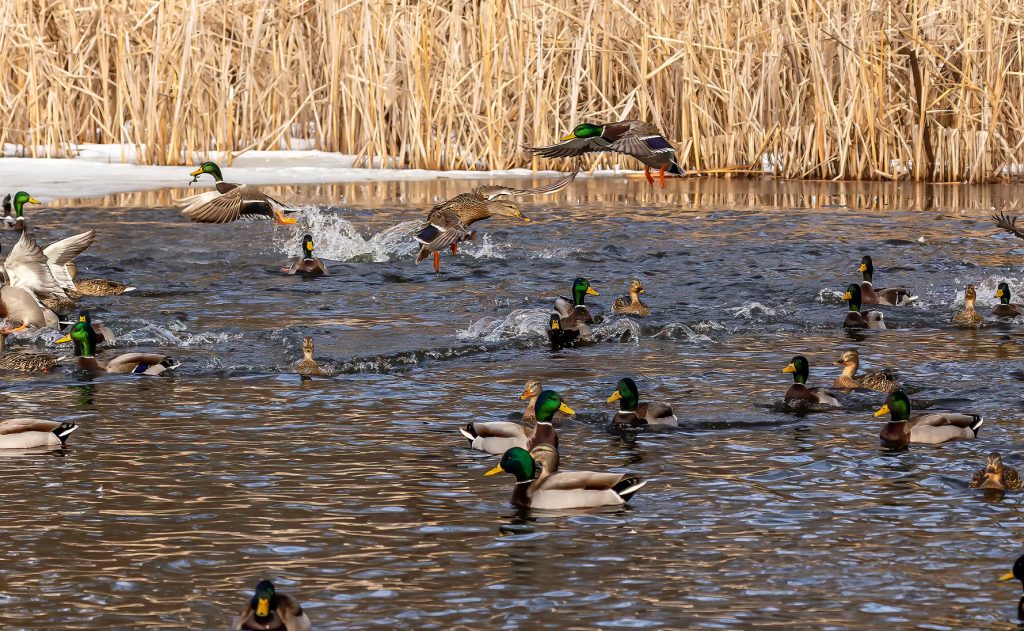
Karel Bock
Migrating waterfowl get pushed by cold fronts and winter storm systems. Experienced duck hunters will pay close attention to the weather patterns and plan their hunting trips accordingly. These same cold fronts that push birds south will also push the ducks you currently have away from you so there could be a void for a few days with very few ducks. When the northern ducks finally arrive, they are tired and hungry. Flooded corn fields will always appeal to migrators as will any available easy food source. The old saying “Set up where the ducks want to be” couldn’t be any truer than during a migrating flight’s pit stop!
Concealment and Camouflage
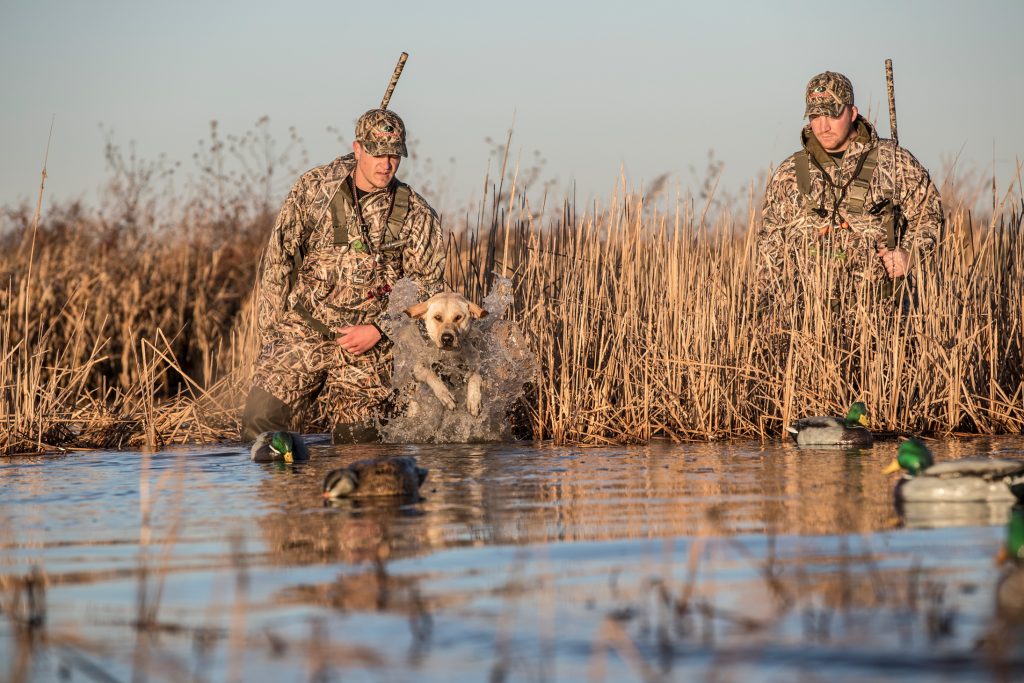
A friend of mine is a pilot and owns a small, two-seater propeller driven plane. He offered to take me for a ride and I asked him to fly over my favorite duck hunting marsh. I learned so much from that trip! In that marsh there were probably close to ten hunting parties. From a birds-eye view, I could see shiny faces, sun reflections glinting off of gun barrels, and boats tucked out of the hunter’s sight, but certainly easily seen by a duck.
It was fun finding all the hunters in that marsh. They all stuck out for one reason or another, but one hunting party seemed to have it mostly right. There were no shiny faces or hands. They either had face masks or camo makeup, along with camo gloves that hid them from the birds. Their camouflage waders, parkas, and hats all blended in nicely with the surrounding vegetation. The hunters were standing in the natural cover, using the vegetation as their camouflage. Their boat was shoved into the marsh about a football field distance upwind from their setup. They had an ample number of decoys set up in a typical J-pattern. It all looked so very natural, but it was their movement that gave their presence away to me – as it would to a duck as well! As long as these waterfowlers stood still when the ducks were working, there’s no doubt that they had a very successful hunt.
To be consistently successful on migrators, you may need to step up your blind game and make sure you’re hidden. Hunters can purchase camouflage blind materials, but close attention must be paid to the style and color that is ordered. You know that green “fast grass” that you have used all early season? Look around – there isn’t much greenery as the late migrators arrive. Brushed-in natural cover can also work but requires meticulous maintenance as birds quickly learn to avoid any unnatural shapes or materials.
Early season camouflaged duck blinds may stick out like a sore thumb later on in the season. Early on, the marsh may have been green cattails with some starting to fade. Later in the season, as the cold and snow begin biting, the marsh is brown. Human nature finds us not wanting to do the same chore twice, but if your blind was camouflaged with green cedar branches prior to the season, as the late season approaches, it’s time to integrate a bunch of dead cattails into your hide.
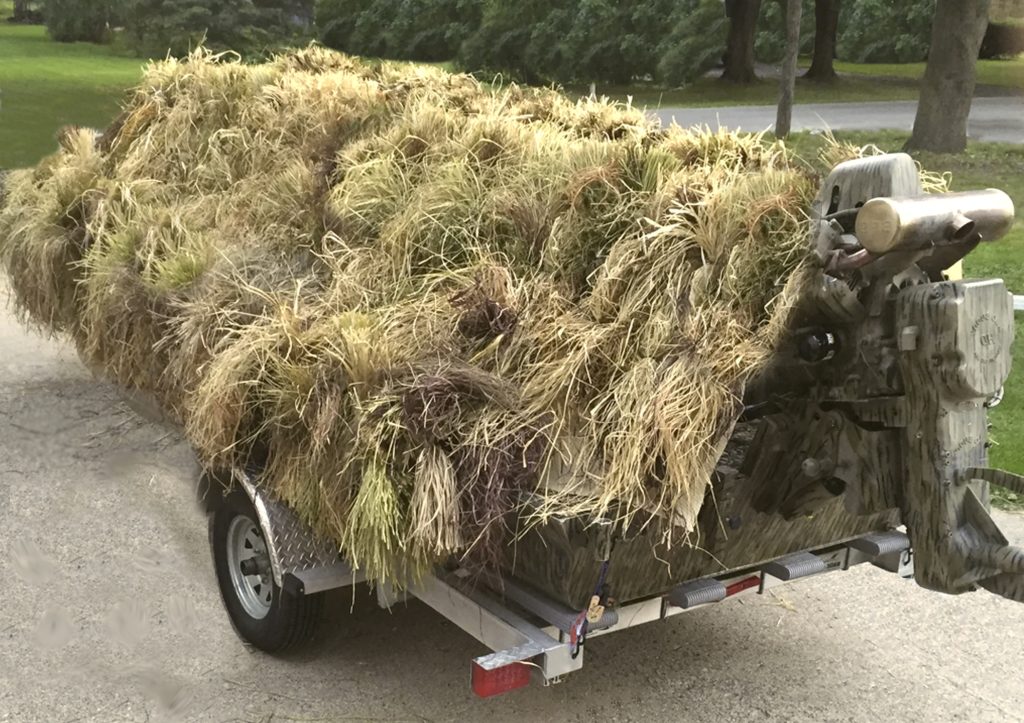
Strategic Decoy Placement
Decoy placement is a strategic element that can significantly impact the outcome of a duck hunt. Experiment with different configurations, including the classic J hook, the U shape, two groups, the V shape, or sporadic feeding ducks to create a realistic and enticing setup. Position decoys to capitalize on wind direction and natural landing zones, maximizing their effectiveness in drawing ducks within shooting range. Always set up so that you can shoot in the upwind direction.
Many successful hunters start with a landing pocket on the downwind side of the spread. Working groups are then staggered upwind in directional feeds with a few wanderers scattered along the outer edges.
Unlike hunting your local resident ducks, decoy numbers matter with northern flight ducks. Bigger spreads of three or four dozen decoys are often superior for attracting large migrant flocks that are searching for safety in numbers. Some hunters pay close attention to species ratios based on predominant birds in the area. I’m not sure that I’m convinced that it makes much difference, but if you have some oddball species duck decoys, it couldn’t hurt to put a few out.
The most important decoy factor in fooling ducks, whether they are local or a migrating flock, is to give them a place to land. They will concentrate on big open pockets in between decoys, and these pockets must be within gun range. Many duck hunters make the mistake of concentrating their decoys too much, only to find that the first few flocks land on the far side at either end – and out of gun range!
Many states allow motion decoys to be used. These electronic decoys hold two distinct advantages over static decoy spreads. A common decoy is tethered to the bottomland via a decoy cord and a weight. The wind will move these decoys a bit, but the motion is nothing compared to a mechanical decoy. This movement not only draws the attention of a nearby flock, but it also draws attention away from the movement mistakes that hunters make when in the blind. Motion decoys come in many varieties and they are all effective. A nice spread doesn’t need many, but adding one or two can really make a difference in luring those migrators down.
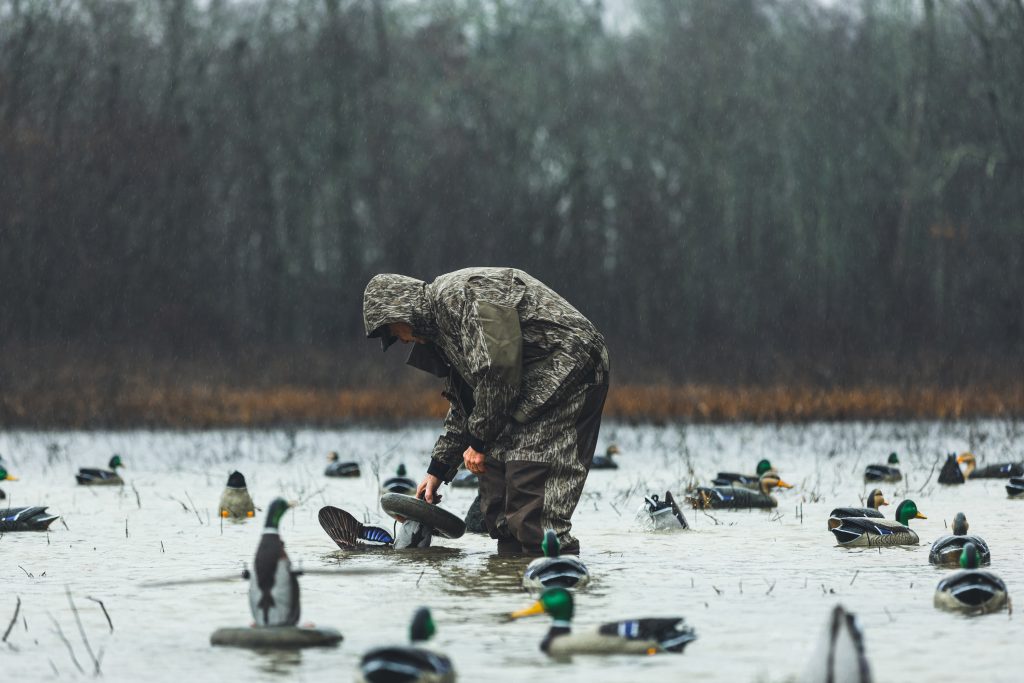
Rob Kinney
Mastering Duck Calls
In addition to decoys, proficient calling is helpful for attracting ducks and convincing them to commit to the decoy spread. Practice a variety of duck calls, from simple quacks and whistles to more complex feeding chuckles, hail calls, and greeting calls. The goal is to create a convincing illusion of a contented duck flock. Mastering the art of duck calling takes time and patience but can greatly increase your chances of success in the field. When I started learning to call ducks, the skill had to be taught personally. There was no such thing as the internet. Today’s aspiring duck callers have a wealth of information available online. New duck callers should concentrate on a simple quack.
A simple quack, once perfected, can easily turn into a series of quacks, simulating a hen calling out to passing birds. Add a feeder chuckle into your waterfowl repertoire, and you have the basic tools that will bring birds into shooting range. Many duck callers (myself included,) hone their skills while stuck in traffic. It’s the perfect time to wail away without having the neighbors come to “talk” with you!
There are times that even the best duck caller in the world can’t bring ducks in close enough. If this seems to be the case, sometimes less calling is better. Migrating ducks have been blared at by every hunter that they fly by. They hear a call that’s just a bit off, see something just a bit different looking in the marsh, and decide that they’ve seen this before and want no part of it.
With perseverance, solid fundamentals, and a dedication to studying the birds, your duck call can become a deadly weapon for finishing flocks that might otherwise abandon your decoys. Combine that with a realistic decoy spread, proper scouting, being where the birds want to be, camouflage that looks like the area in which you are hunting, and you will stand a very good chance at dropping some colorful migrators into your dekes.
Join our weekly newsletter or subscribe to GameKeepers Magazine.
Your source for information, equipment, know-how, deals and discounts to help you get the most from every hard-earned moment in the field.

